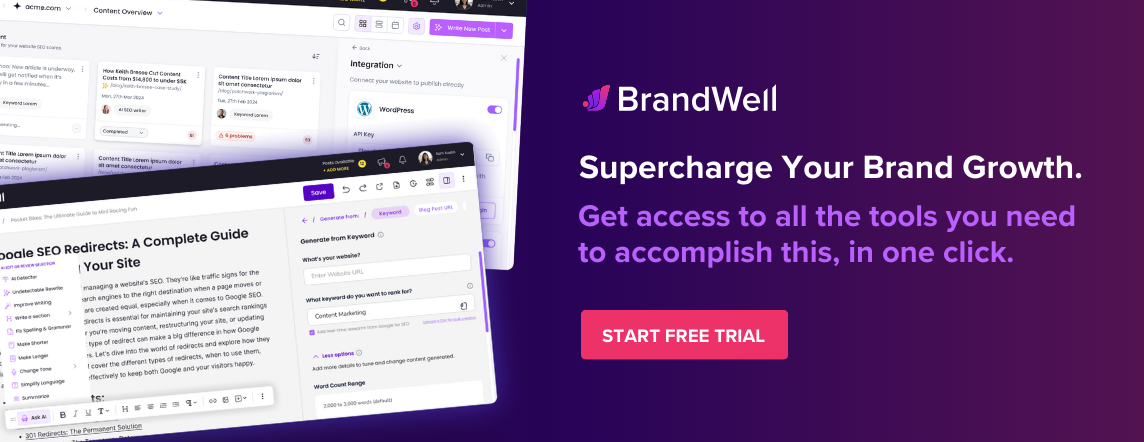Discover top guides, trends, tips and expertise from AIO Writers
Content Personalization is Key to Unlocking Customer Loyalty
Julia McCoy
Wednesday, 3rd May 2023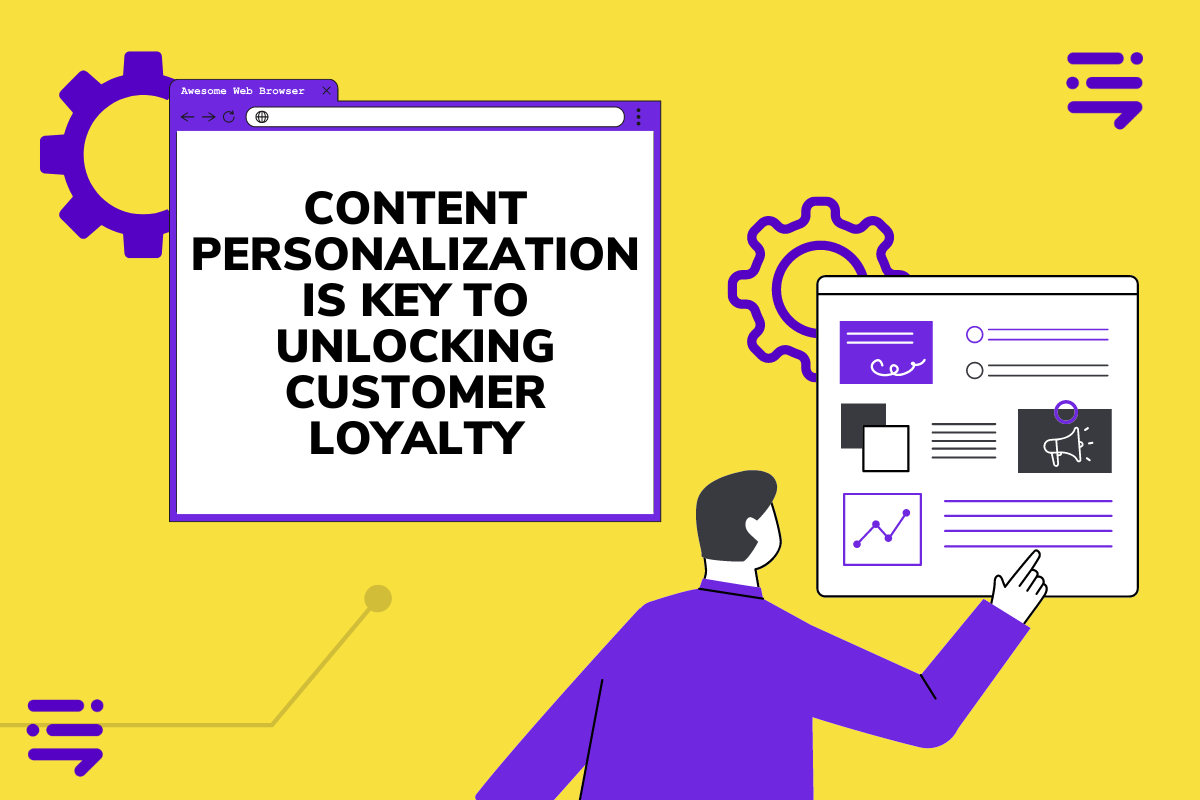
One of the biggest marketing trends in recent years is content personalization. From Netflix to Amazon, brands are delivering personalized customer experiences to their subscribers 24/7.
Investing in content personalization to build relationships with customers has some serious rewards. And if you’re not yet doing it, then you could be missing out on a lot of opportunities.
How? Let’s look at the numbers:
- 91% of consumers are more likely to shop with brands that provide personalized offers and recommendations.
- 90% of U.S. consumers find marketing personalization very or somewhat appealing.
- 80% of frequent shoppers only buy from brands that personalize the experience.
- 98% of marketers say personalization advances customer relationships.
Personalizing digital content to a specific target audience allows businesses to create experiences that are meaningful and impactful. By collecting and analyzing consumer data, marketers can create customized content that drives engagement and conversions.
How do you personalize content?
In this blog post, we’ll show you how the big brands are personalizing content to inspire you to develop content that is personal to your market.
Table Of Contents:
- What is Content Personalization?
- Consumer Data Analysis
- Audience Segmentation
- Personalize Content With AI
- Best Examples of Content Personalization
- Tips for Effective Content Personalization
- Conclusion
What is Content Personalization?
Content personalization is a marketing strategy that involves creating tailored content based on consumer data to improve user experience and increase conversion rates.
In today’s digital landscape, consumers view personalization as the default standard for brand engagement, and they are more likely to respond positively if brands make an effort to reach out with messages that are written specifically for them.
Consumer Data Analysis
To develop a successful content personalization plan, you must first gather valuable information about your customer base. You can do this through various methods such as tracking website behavior, analyzing social media interactions, or using customer data platforms (CDPs). By collecting this data, marketers gain insights into customer preferences and interests which help them tailor content accordingly.
- Website behavior: Analyzing how users interact with your site can provide valuable information on their interests and preferences. Tools like Google Analytics offer comprehensive reports on user behavior.
- Social media interactions: Social listening tools enable businesses to monitor conversations around their brand or industry across different platforms. These insights help identify trending topics among your target audience.
- Customer data platforms (CDPs): CDPs consolidate customer data from multiple sources into a single database, allowing marketers to better understand individual customers’ needs for targeted marketing campaigns.
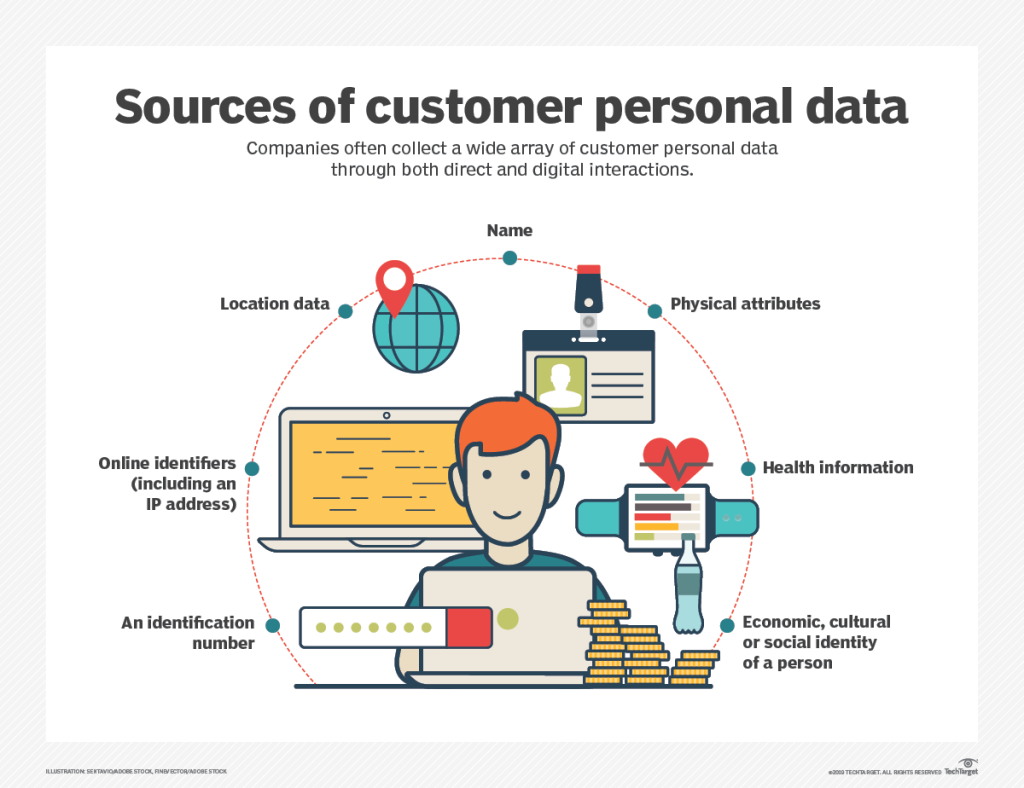
Image source: TechTarget
Audience Segmentation
Once you have collected and analyzed consumer data, the next step is to segment your audience based on demographic makeup and buyer personas.
By segmenting audiences, marketers can create compelling content that anticipates and matches buyers’ interests at various stages of the sales journey. This targeted approach increases conversions while driving more qualified leads.
Create Buyer Personas
Target personas are fictional representations of your ideal customers, which help you understand their needs, preferences, pain points, and motivations better. Some common factors used in creating buyer personas include:
- Age
- Gender
- Location
- Income level
- Educational background
- Career/industry focus
Segmenting your target audience allows you to generate content that is tailored specifically for them, which can help build stronger connections and encourage engagement. Advanced technologies such as machine learning algorithms have enabled companies to further refine their content personalization efforts for even greater success.
Here’s an example of buyer personas that I asked ChatGPT to create for a new client:

Improve User Experience with Tailored Content
The ultimate goal of content personalization is to enhance the overall user experience. When users find value in your email or blog post, they can connect with your brand which could lead to conversion and loyalty.
Some effective personalization techniques include:
- Dynamic content: Displaying content that changes based on user behavior or preferences. For example, showing personalized product recommendations to returning customers.
- Email marketing campaigns: Sending targeted emails with tailored offers and messaging based on subscriber data such as browsing history, purchase patterns, or demographic information.
- Landing page optimization: Customizing landing pages for different audience segments by adjusting headlines, images, and calls-to-action (CTAs) to resonate better with each group’s interests.
Incorporating these strategies into your marketing efforts can help you create a more personalized experience for your audience while driving higher engagement rates and conversions.
Personalize Content With AI
Content personalization has evolved significantly with the advent of advanced technologies, enabling businesses to deliver highly targeted and relevant content at scale. Machine learning algorithms have emerged as a powerful tool for large-scale personalization efforts, allowing companies like Netflix and Google to shape user experiences around individual preferences.
Machine Learning Algorithms in Action
Machine learning (ML) algorithms analyze vast amounts of data points to identify patterns and make predictions based on historical trends. From this data, marketers are able to create personalized content recommendations for each individual customer.
For example:
- An e-commerce website could use ML to recommend products based on customers’ purchase history or items they’ve viewed recently.
- A news platform might leverage natural language processing (NLP) techniques that automatically generate personalized headlines or summaries based on users’ reading habits and interests.
- A streaming service like Netflix uses sophisticated ML engines that consider factors such as viewing history and genre preferences when suggesting new shows or movies for its subscribers.
Best Examples of Content Personalization
Here are seven success stories that serve as prime examples of how effective content personalization strategies can be implemented using advanced technologies.
1. Netflix
As one of the pioneers in content personalization, Netflix uses a combination of collaborative filtering and deep learning algorithms to provide highly accurate recommendations for its users. By analyzing factors such as viewing history, ratings, and genre preferences, their recommendation engine can predict which shows or movies a user is most likely to enjoy.
This greatly enhances the online user experience and minimizes the chance of irrelevant content showing for their customers.
For example, if someone frequently watches action movies featuring superheroes like Marvel’s Avengers series or DC Comics’ Justice League franchise, then Netflix may suggest related movies/shows from its library such as Spider-Man: Into The Spider-Verse or Daredevil. The same goes for fans of crime thrillers, medical dramas, romcoms, documentaries, and K-dramas — they get recommendations based on the shows or movies they love.
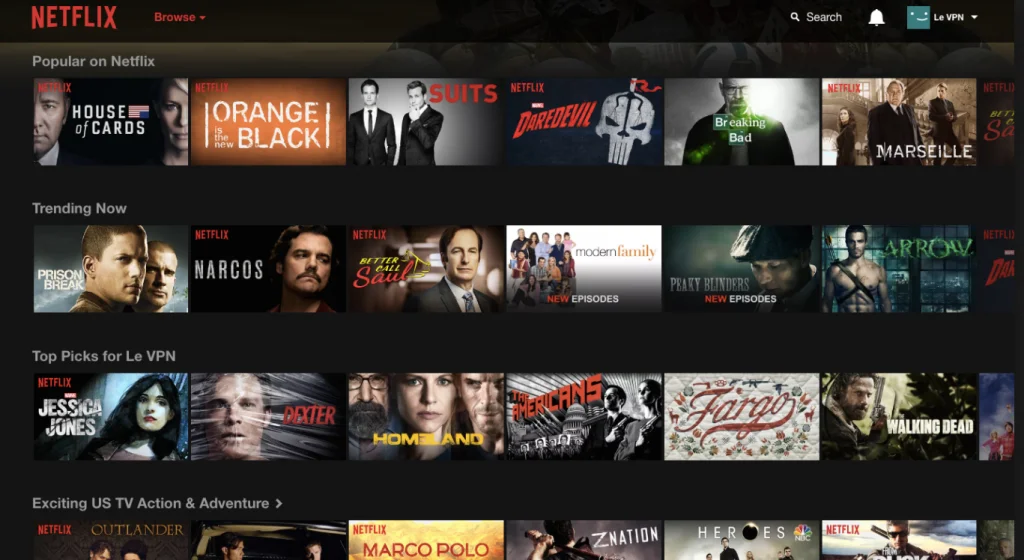
Image source: VWO
This type of hyper-personalized recommendation engine ensures customers stay engaged longer by finding more relevant content faster.
2. Amazon
Amazon is one of the best when it comes to content personalization in e-commerce. When you visit Amazon, you’ll get a homepage that’s completely personalized based on the products you’ve purchased and the items you’ve browsed.
For instance, if you’ve recently bought books on finance and entrepreneurship from Amazon, your homepage will display product recommendations for similar titles such as The Lean Startup or Rich Dad Poor Dad. This level of customization helps users discover new products they might be interested in buying based on their purchase history.
3. Google Discover
This personalized news feed service from Google uses machine learning models to curate articles based on a user’s search history, location data, and browsing habits. The more you use Google services like Search or Maps, the better your Discover feed becomes at predicting what content will be relevant and engaging for you.
4. The New York Times
Even traditional media outlets like The New York Times have started to embrace content personalization by offering a “For You” section that recommends articles based on pieces you previously read. By analyzing readers’ browsing behavior, the newspaper suggests stories from different sections such as politics, business, or entertainment that match their interests. This way, readers get more relevant content while also increasing engagement and loyalty with the publication.
5. Airbnb
Retargeting is another form of content personalization where digital marketers use customer data to deliver targeted ads across various channels such as social media platforms like Facebook or Instagram. This is where Airbnb excels.
As an example, if you recently searched for cities on Airbnb but did not book anything, then you might see retargeting ads featuring discounted deals in those locations when scrolling through your Facebook feed next time.
6. Brex
Brex is a B2B finance technology company that offers credit cards specifically designed for startups. The company saw a 29% increase in completed applications after personalizing its homepage by industry.
For example, if you visit Brex’s website from the life sciences field, you will see an entirely different homepage than someone who visits from the e-commerce industry. This way, Brex can show visitors what they want to see without overwhelming them with irrelevant information.
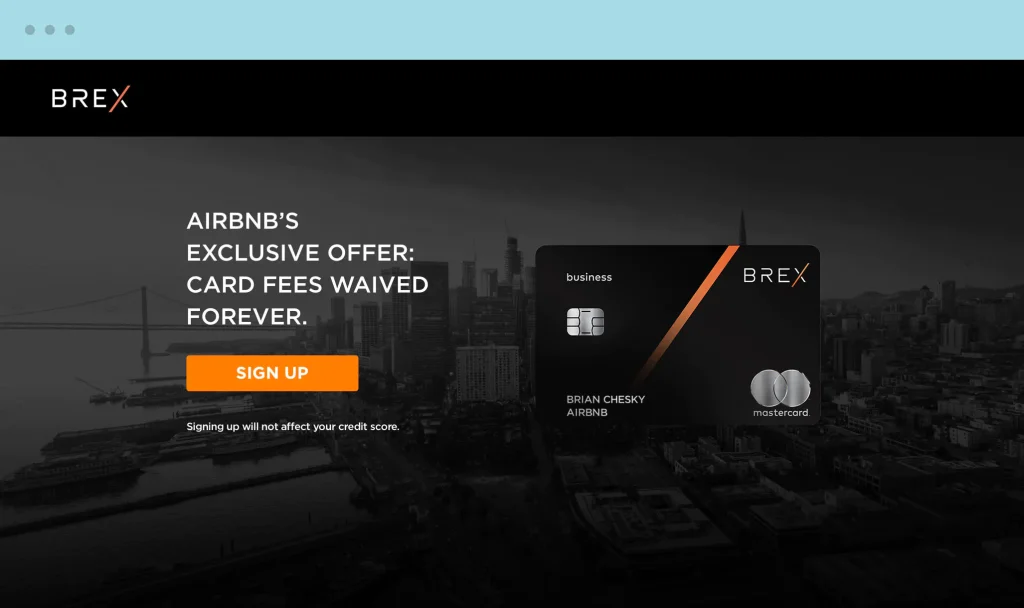
Image source: Mutiny
This strategy has helped Brex significantly improve user engagement and conversion rates as it provides users with customized messaging that resonates better with them.
7. Parse.ly
One common problem faced by many online publishers is keeping readers engaged once they finish reading an article or blog post. That’s where Parse.ly comes in handy.
Parse.ly’s personalized content recommendations allow publishers to recommend articles that readers may be interested in based on their history while browsing through your site. These recommendations can take various forms such as tiles at the end of an article or even curated newsletters sent via email.
Slate used Parse.ly’s recommended content API to create an infinite scroll experience that automatically shows relevant articles when readers reach the bottom of another one. Since adopting this approach along with other personalized strategies, Slate has seen an 8.5% increase in engaged time which proves how effective personalization can be.
Personalization matters because it helps brands create stronger connections with potential customers by delivering customized experiences tailored to their needs and preferences. Thanks to advanced technologies like machine learning, you can now easily develop highly personalized content to increase engagement and improve user experience.
Tips for Effective Content Personalization
Now that you’ve seen how the top brands are doing it, let me share with you some real-world examples of how to implement personalization in your content strategy.
Recommendations for Similar or Related Content
Sharing recommendations within blog posts or product pages is an effective way to keep readers engaged while encouraging further exploration of your website. This tactic not only adds value to the user experience but also increases the likelihood of conversions by presenting relevant options tailored to individual interests.
To do this, consider using tools like Outbrain which offers a platform designed specifically for promoting related articles on your site. Alternatively, you could implement custom widgets with personalized suggestions based on browsing history or other data points collected from users.
- Add a “Related Articles” widget at the end of each blog post featuring three to five links that are contextually relevant.
- Use advanced analytics and data (such as most viewed products) to suggest popular items within product pages that complement current selections.
Seasonal and Holiday-Themed Content
Creating seasonal content is another way to add relevance and timeliness to an online store. By creating targeted campaigns around specific holidays or events (e.g., Christmas sales), businesses can capitalize on increased consumer interest during these periods while fostering stronger connections through shared experiences.
A great example of this strategy in action is Starbucks, which regularly launches limited-time offers and promotions tied to seasonal events, such as their iconic Pumpkin Spice Latte during the fall season. This tactic not only drives sales but also generates buzz on social media platforms.
- Plan a content calendar that includes holiday-themed blog posts, email campaigns, or social media updates throughout the year.
- Offer special deals or discounts exclusive to certain holidays (e.g., Black Friday) to incentivize purchases and drive customer engagement.
By implementing these simple tactics for effective personalization, businesses can enhance user experience while increasing click-through rates (CTR) and conversion rates. Remember that personalizing your content doesn’t have to be complicated — even small changes can make a significant impact on overall success.
Conclusion
Personalization isn’t a trend that will disappear anytime soon. In fact, it’s becoming increasingly essential for businesses to deliver personalized interactions and experiences to their customers.
Gone are the days when generic content was enough to capture people’s attention. Today’s consumers expect tailored messaging that resonates with them personally — otherwise, they’ll quickly lose interest or even unsubscribe from your email list altogether.
Personalized content allows you to cater directly to your target audience’s interests, preferences, and behaviors. By collecting data on visitor behavior and using machine learning algorithms, you can provide customized content that speaks directly to potential customers’ needs.
This level of personalization goes beyond just addressing someone by name in an email or displaying recommended products based on past purchases. It involves creating unique landing pages with relevant information for each segment of your audience based on their browsing history and social media activity.
As businesses continue to collect third-party data and visitor data through email lists and social media platforms, successful content personalization will become increasingly important for building customer loyalty and driving conversions.

UNLOCK YOUR POTENTIAL
Long Headline that highlights Value Proposition of Lead Magnet
Grab a front row seat to our video masterclasses, interviews, case studies, tutorials, and guides.

